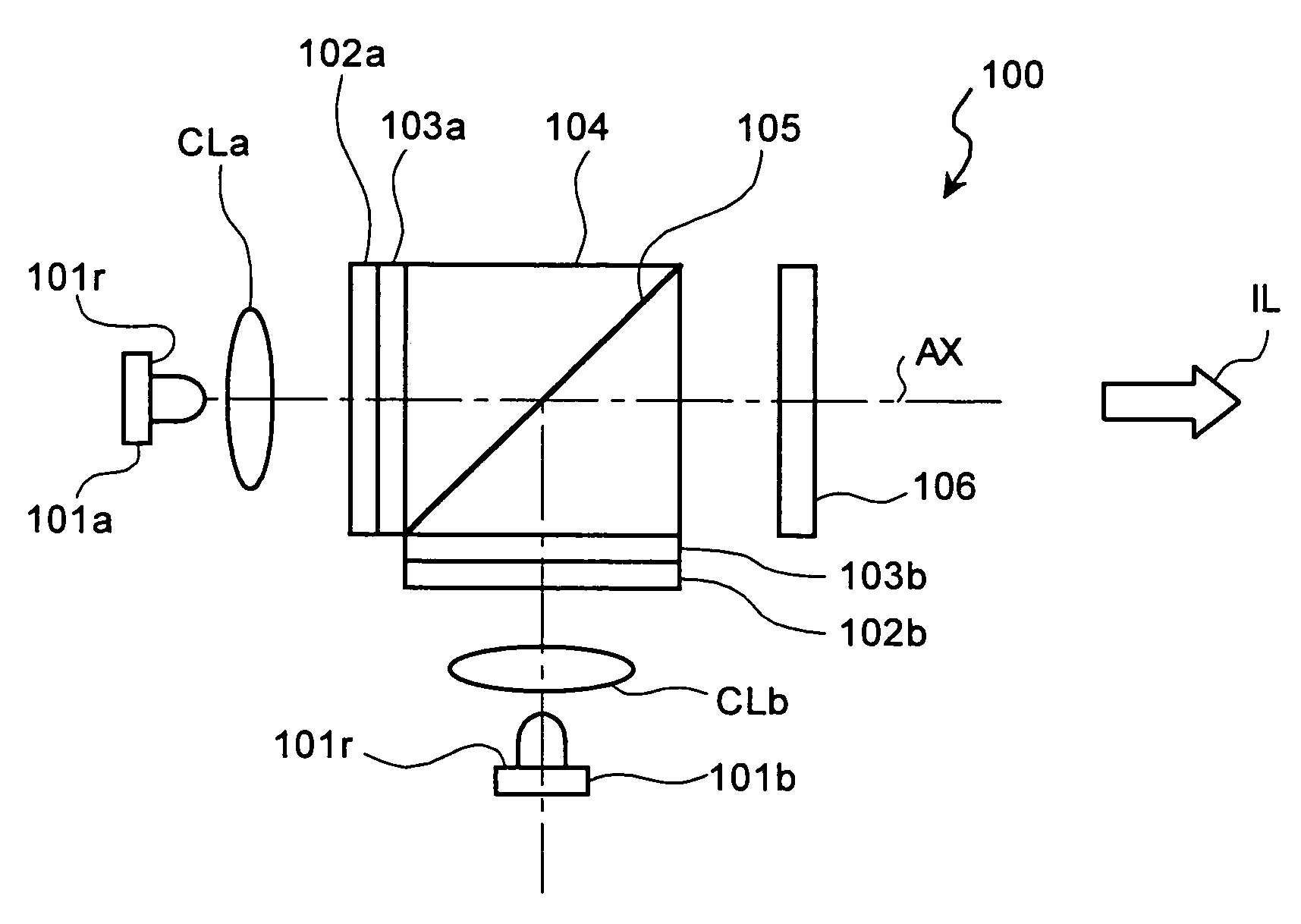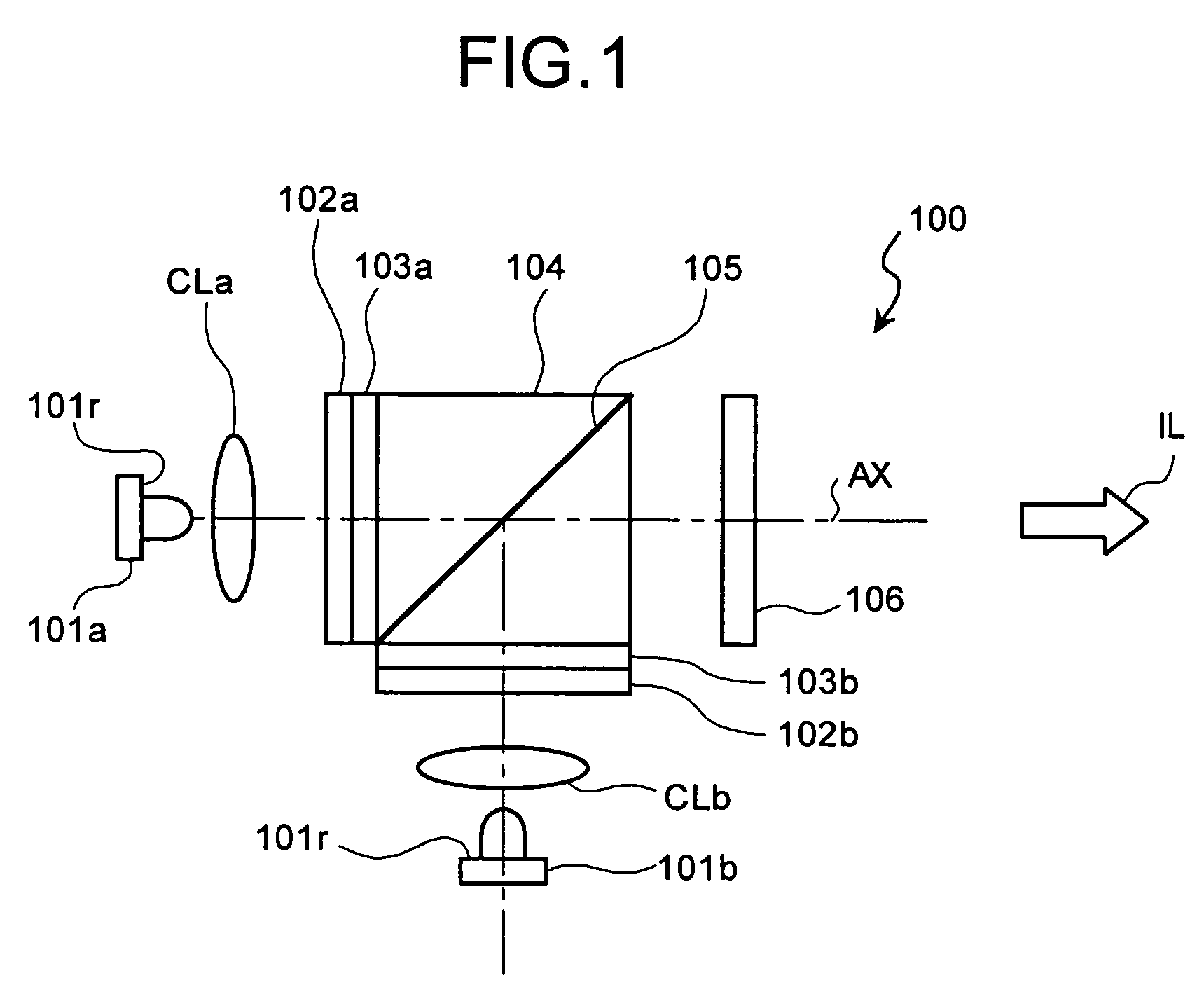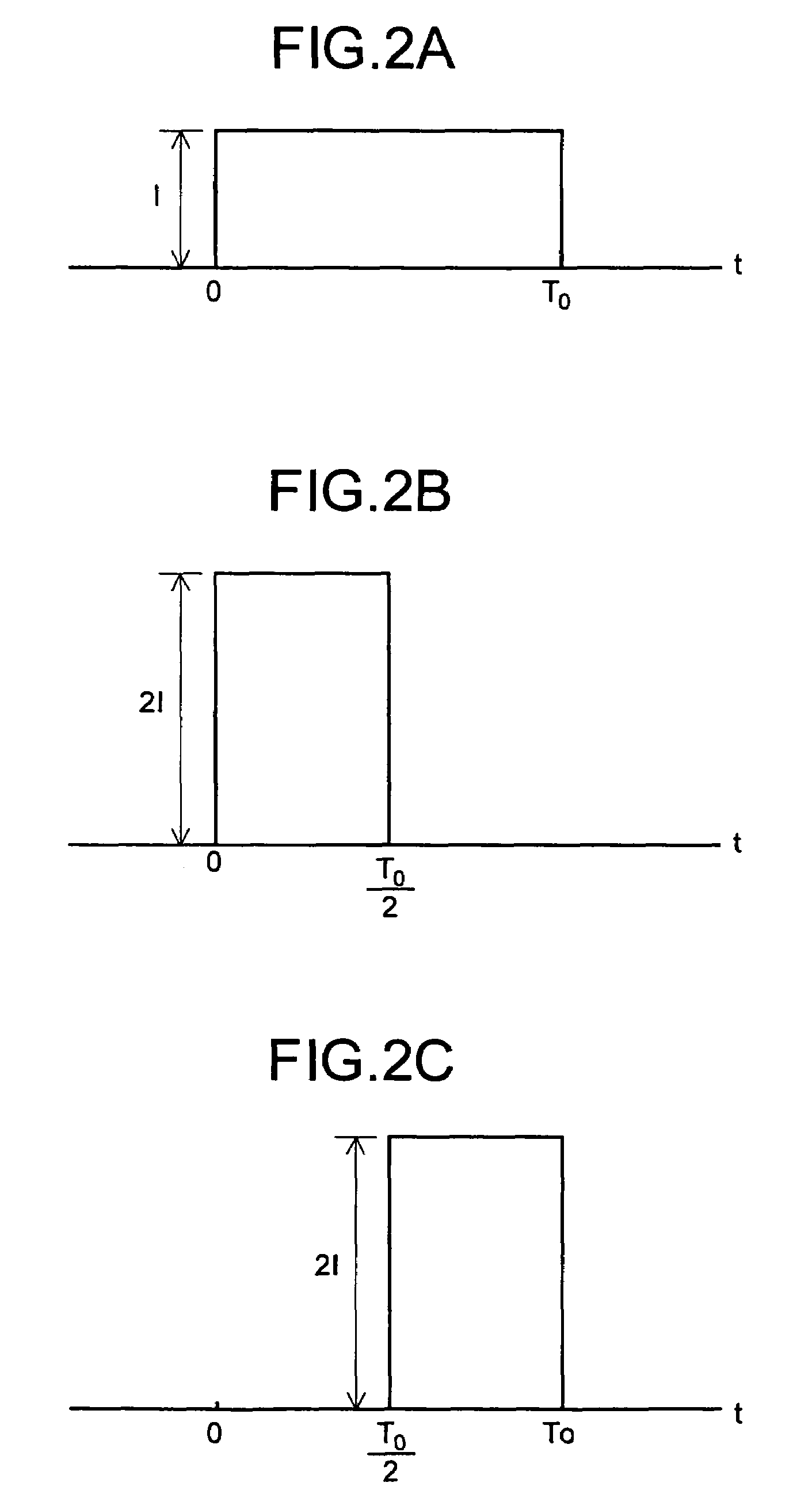Illuminating apparatus, image display apparatus, and projector
a technology of illumination apparatus and image display, which is applied in the direction of picture reproducers using projection devices, television systems, instruments, etc., can solve the problems of large illumination optical system, difficult to effectively use all the light flux from the light source, and large size of the illumination optical system
- Summary
- Abstract
- Description
- Claims
- Application Information
AI Technical Summary
Benefits of technology
Problems solved by technology
Method used
Image
Examples
first embodiment
[0027]FIG. 1 is a schematic diagram of an illuminating apparatus according to the present invention. The illuminating apparatus 100 includes a first LED 101a that is a first solid light-emitting element and a second LED 101b that is a second solid light-emitting element. Both the first LED 101a and the second LED 101b emit light of same wavelength region, for example, a G-light. The G-light from the first LED 101a is incident on a collimating lens CLa. The collimating lens CLa converts the incident light into a substantially parallel light. The substantially parallel light is incident on a polarizing beam splitter 104 that is a polarized-light combining unit. On a side of the polarizing beam splitter 104 toward the first LED 101a, a λ / 4 waveplate 102a and a first reflection type polarizing plate 103a are bonded by an optically transparent adhesive.
[0028]The first reflection type polarizing plate 103a transmits a polarized light of one of a first oscillation direction and a second os...
fourth embodiment
[0056]FIG. 7 is a schematic diagram of a projector 700 according to the present invention. A first solid light-emitting element, a first LED 701a, and a second solid light-emitting element, a second LED 701b, provides a white light. The white light mentioned here includes both light of a wavelength region where a spectral distribution of the light is continuously broad and light having discrete peak wavelengths for the R-light, the G-light, and the B-light, respectively. The first LED 701a and the second LED 701b have a same configuration, so that the first LED 701a is explained as an example. Light emitted from the first LED 701a is reflected by a reflector 702a to a polarizing beam splitter 704. A focusing lens 703a having a positive refracting power focuses the light directly from the first LED 701a and the light reflected at the reflector 702a at an aperture 708. With this arrangement, the light from the first LED 701a is incident on a predetermined surface of the polarizing bea...
PUM
 Login to View More
Login to View More Abstract
Description
Claims
Application Information
 Login to View More
Login to View More - R&D
- Intellectual Property
- Life Sciences
- Materials
- Tech Scout
- Unparalleled Data Quality
- Higher Quality Content
- 60% Fewer Hallucinations
Browse by: Latest US Patents, China's latest patents, Technical Efficacy Thesaurus, Application Domain, Technology Topic, Popular Technical Reports.
© 2025 PatSnap. All rights reserved.Legal|Privacy policy|Modern Slavery Act Transparency Statement|Sitemap|About US| Contact US: help@patsnap.com



